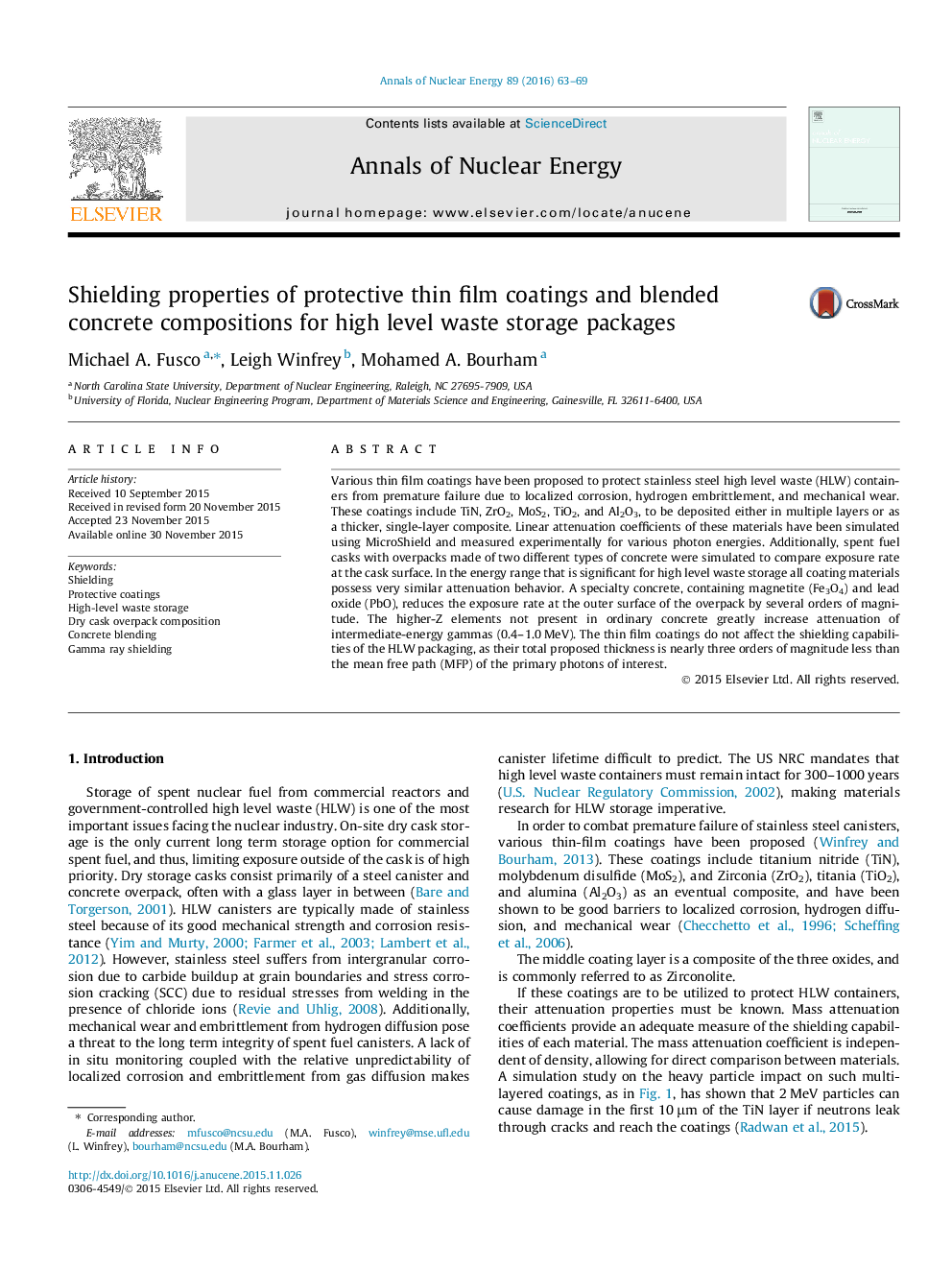| Article ID | Journal | Published Year | Pages | File Type |
|---|---|---|---|---|
| 1728054 | Annals of Nuclear Energy | 2016 | 7 Pages |
•Measured linear attenuation coefficients are the same for bare and coated steels.•Gamma mean free path is much larger than coating thickness; buildup is negligible.•‘Concrete-6’ reduces exposure rate outside spent fuel cask significantly over ordinary concrete.
Various thin film coatings have been proposed to protect stainless steel high level waste (HLW) containers from premature failure due to localized corrosion, hydrogen embrittlement, and mechanical wear. These coatings include TiN, ZrO2, MoS2, TiO2, and Al2O3, to be deposited either in multiple layers or as a thicker, single-layer composite. Linear attenuation coefficients of these materials have been simulated using MicroShield and measured experimentally for various photon energies. Additionally, spent fuel casks with overpacks made of two different types of concrete were simulated to compare exposure rate at the cask surface. In the energy range that is significant for high level waste storage all coating materials possess very similar attenuation behavior. A specialty concrete, containing magnetite (Fe3O4) and lead oxide (PbO), reduces the exposure rate at the outer surface of the overpack by several orders of magnitude. The higher-Z elements not present in ordinary concrete greatly increase attenuation of intermediate-energy gammas (0.4–1.0 MeV). The thin film coatings do not affect the shielding capabilities of the HLW packaging, as their total proposed thickness is nearly three orders of magnitude less than the mean free path (MFP) of the primary photons of interest.
